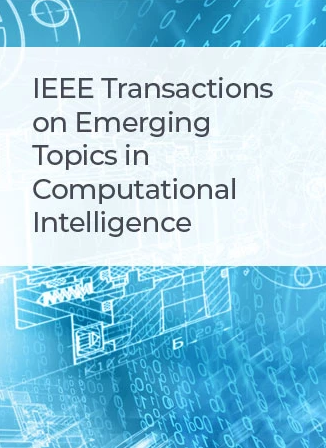GT-WHAR: A Generic Graph-Based Temporal Framework for Wearable Human Activity Recognition With Multiple Sensors
IF 5.3
3区 计算机科学
Q1 COMPUTER SCIENCE, ARTIFICIAL INTELLIGENCE
IEEE Transactions on Emerging Topics in Computational Intelligence
Pub Date : 2024-04-02
DOI:10.1109/TETCI.2024.3378331
引用次数: 0
Abstract
Using wearable sensors to identify human activities has elicited significant interest within the discipline of ubiquitous computing for everyday facilitation. Recent research has employed hybrid models to better leverage the modal information of sensors and temporal information, enabling improved performance for wearable human activity recognition. Nevertheless, the lack of effective exploitation of human structural information and limited capacity for cross-channel fusion remains a major challenge. This study proposes a generic design, called GT-WHAR, to accommodate the varying application scenarios and datasets while performing effective feature extraction and fusion. Firstly, a novel and unified representation paradigm, namelyGT-WHAR:利用多个传感器进行可穿戴人体活动识别的通用图式时态框架
利用可穿戴传感器识别人类活动已引起泛在计算学科的极大兴趣,从而为日常生活提供便利。最近的研究采用了混合模型来更好地利用传感器的模态信息和时间信息,从而提高了可穿戴人体活动识别的性能。然而,缺乏对人体结构信息的有效利用以及跨通道融合能力有限仍然是一个重大挑战。本研究提出了一种名为 GT-WHAR 的通用设计,以适应不同的应用场景和数据集,同时进行有效的特征提取和融合。首先,本研究提出了一种新颖而统一的表示范式,即体感图表示法(Body-Sensing Graph Representation),通过考虑骨骼结构的内在连接性,将结构信息纳入图集,从而用图集表示人体运动。其次,新设计的身体节点注意力图网络采用图神经网络来提取和融合图集中的跨通道信息。最后,将图网络嵌入到所提出的双向时态学习网络中,便于结合所学结构特征提取时态信息。在基准数据集上进行的大量实验中,GT-WHAR 的表现优于最先进的方法,证明了其有效性和功效。此外,我们还通过多个研究问题证明了该框架的通用性,并对各种影响因素进行了深入研究。
本文章由计算机程序翻译,如有差异,请以英文原文为准。
求助全文
约1分钟内获得全文
求助全文
来源期刊

IEEE Transactions on Emerging Topics in Computational Intelligence
Mathematics-Control and Optimization
CiteScore
10.30
自引率
7.50%
发文量
147
期刊介绍:
The IEEE Transactions on Emerging Topics in Computational Intelligence (TETCI) publishes original articles on emerging aspects of computational intelligence, including theory, applications, and surveys.
TETCI is an electronics only publication. TETCI publishes six issues per year.
Authors are encouraged to submit manuscripts in any emerging topic in computational intelligence, especially nature-inspired computing topics not covered by other IEEE Computational Intelligence Society journals. A few such illustrative examples are glial cell networks, computational neuroscience, Brain Computer Interface, ambient intelligence, non-fuzzy computing with words, artificial life, cultural learning, artificial endocrine networks, social reasoning, artificial hormone networks, computational intelligence for the IoT and Smart-X technologies.
 求助内容:
求助内容: 应助结果提醒方式:
应助结果提醒方式:


